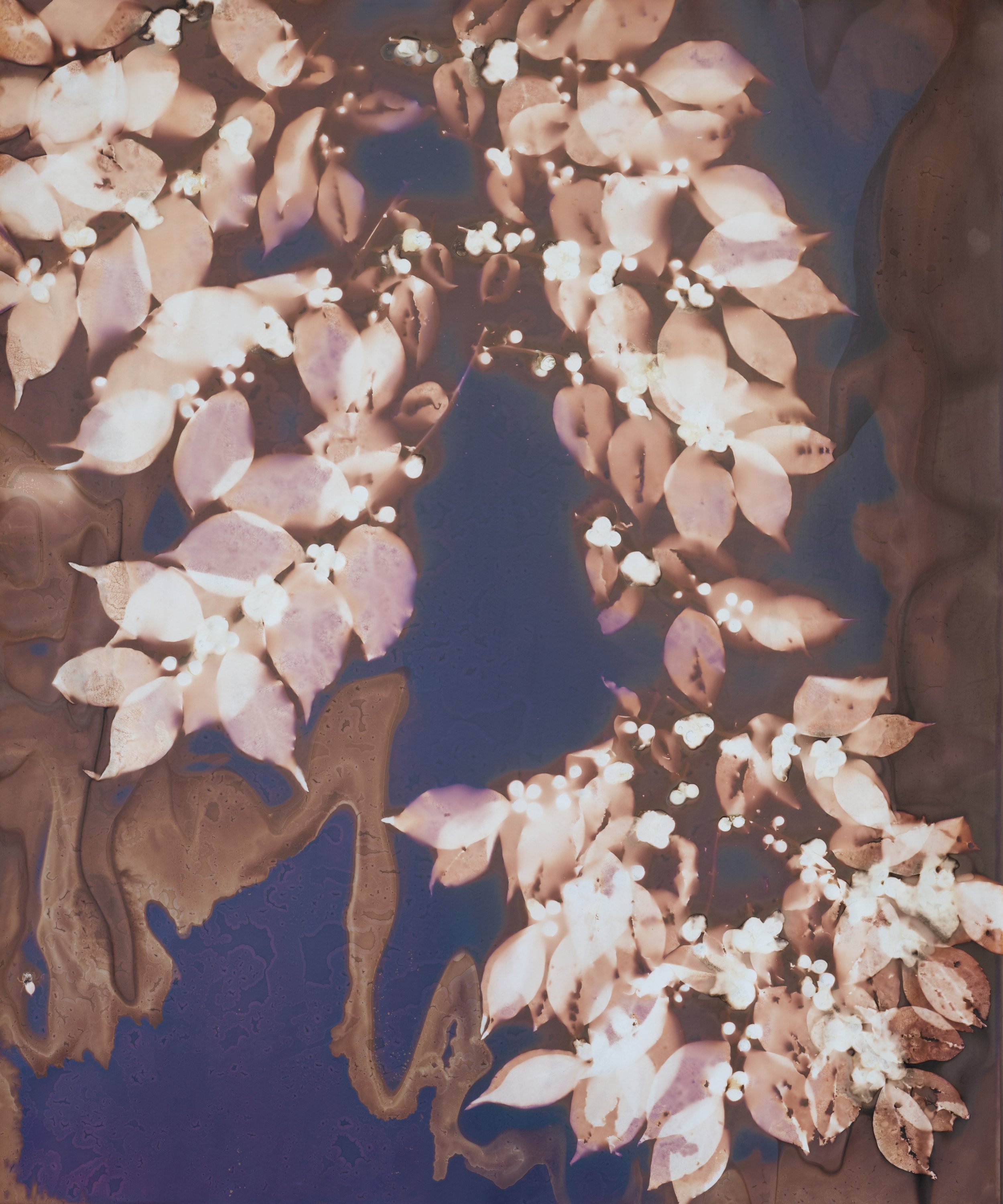
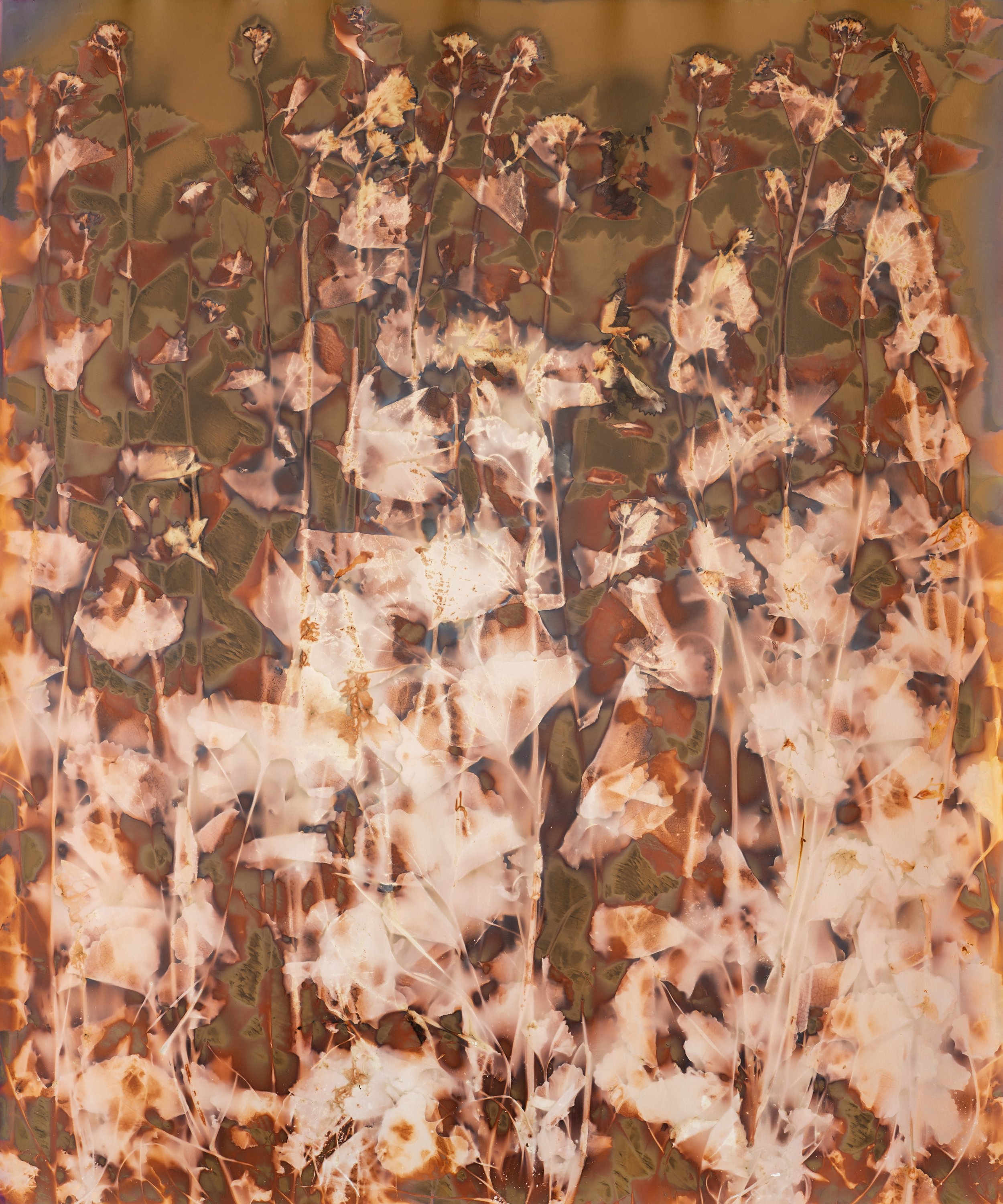
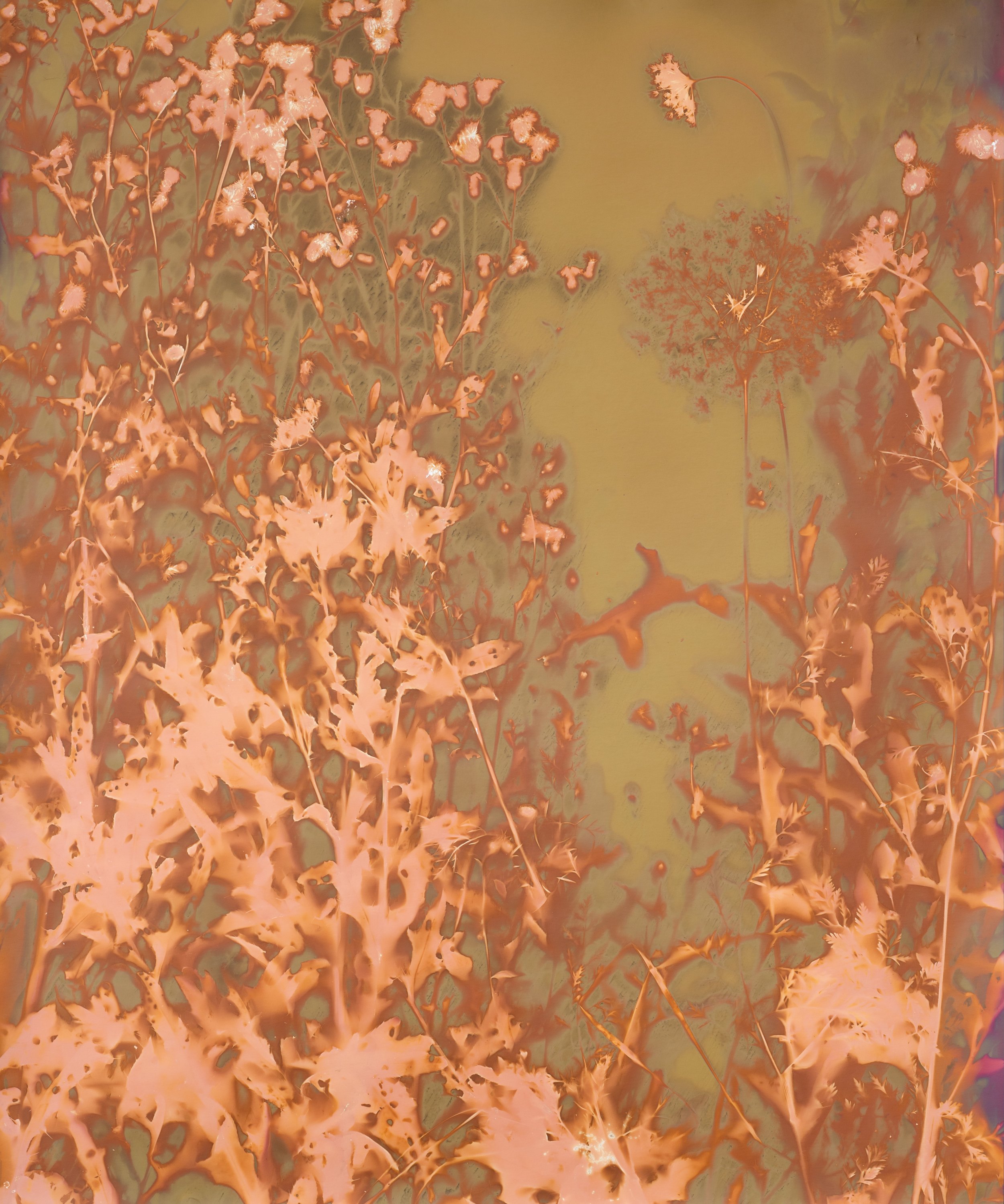
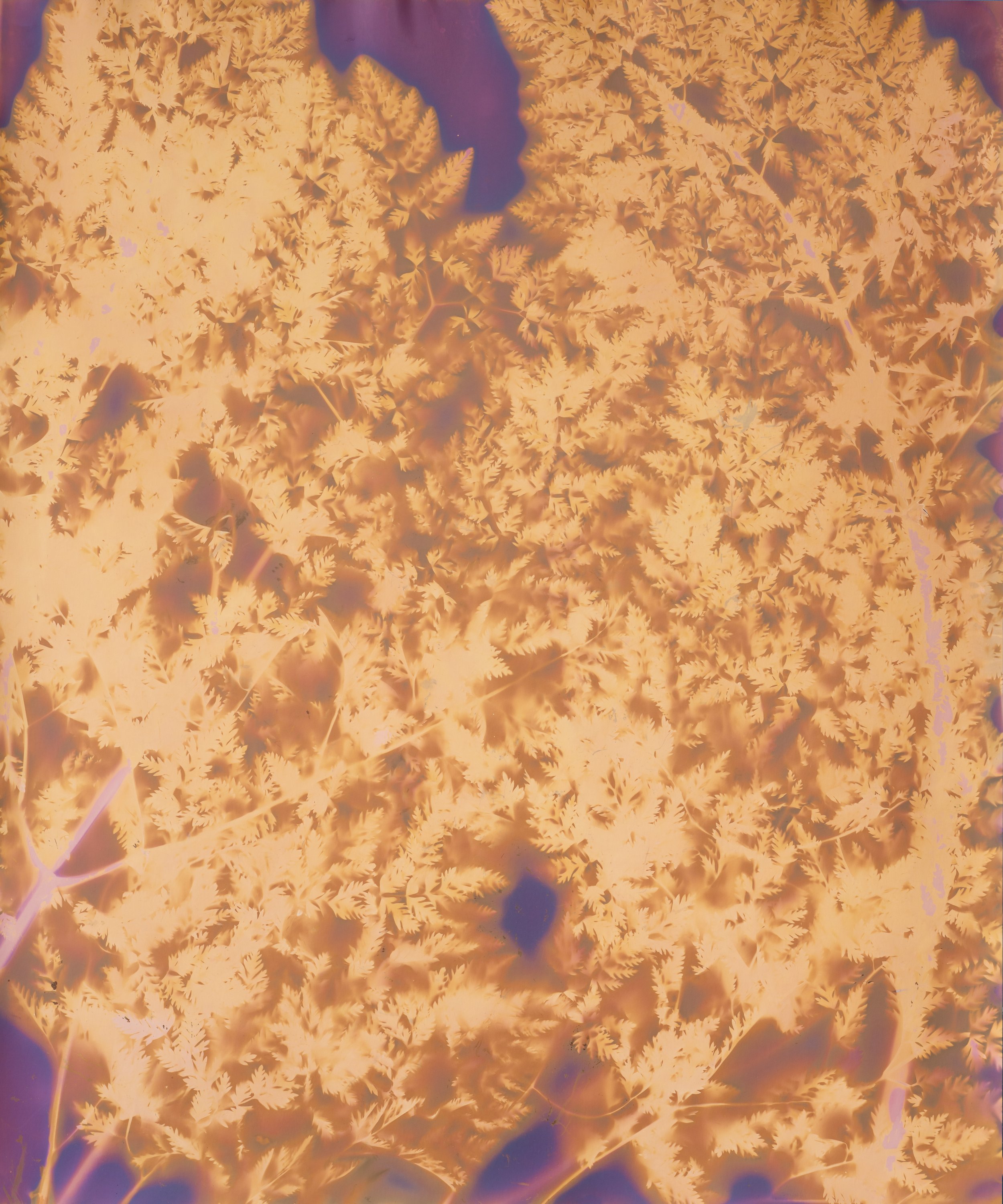
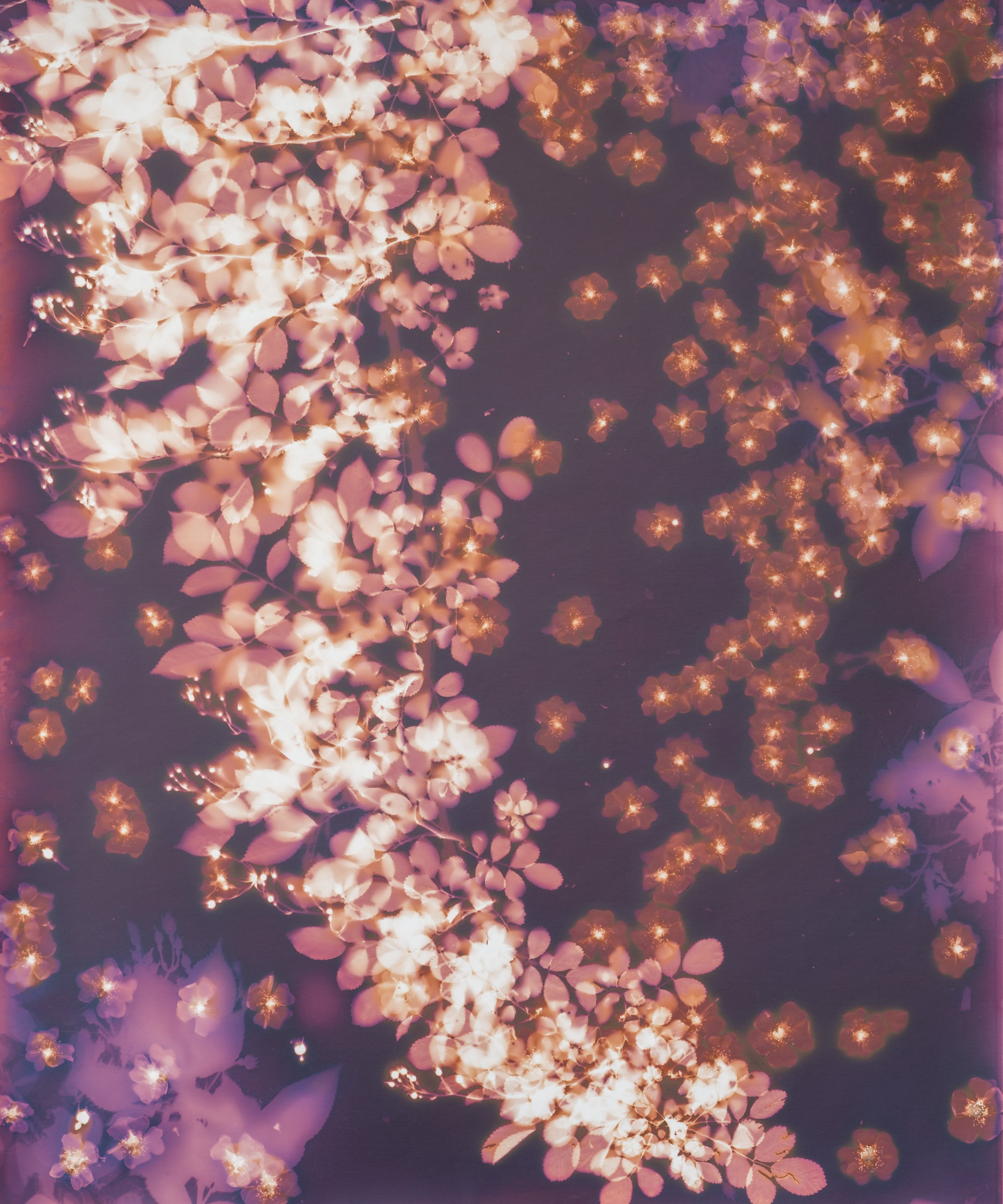
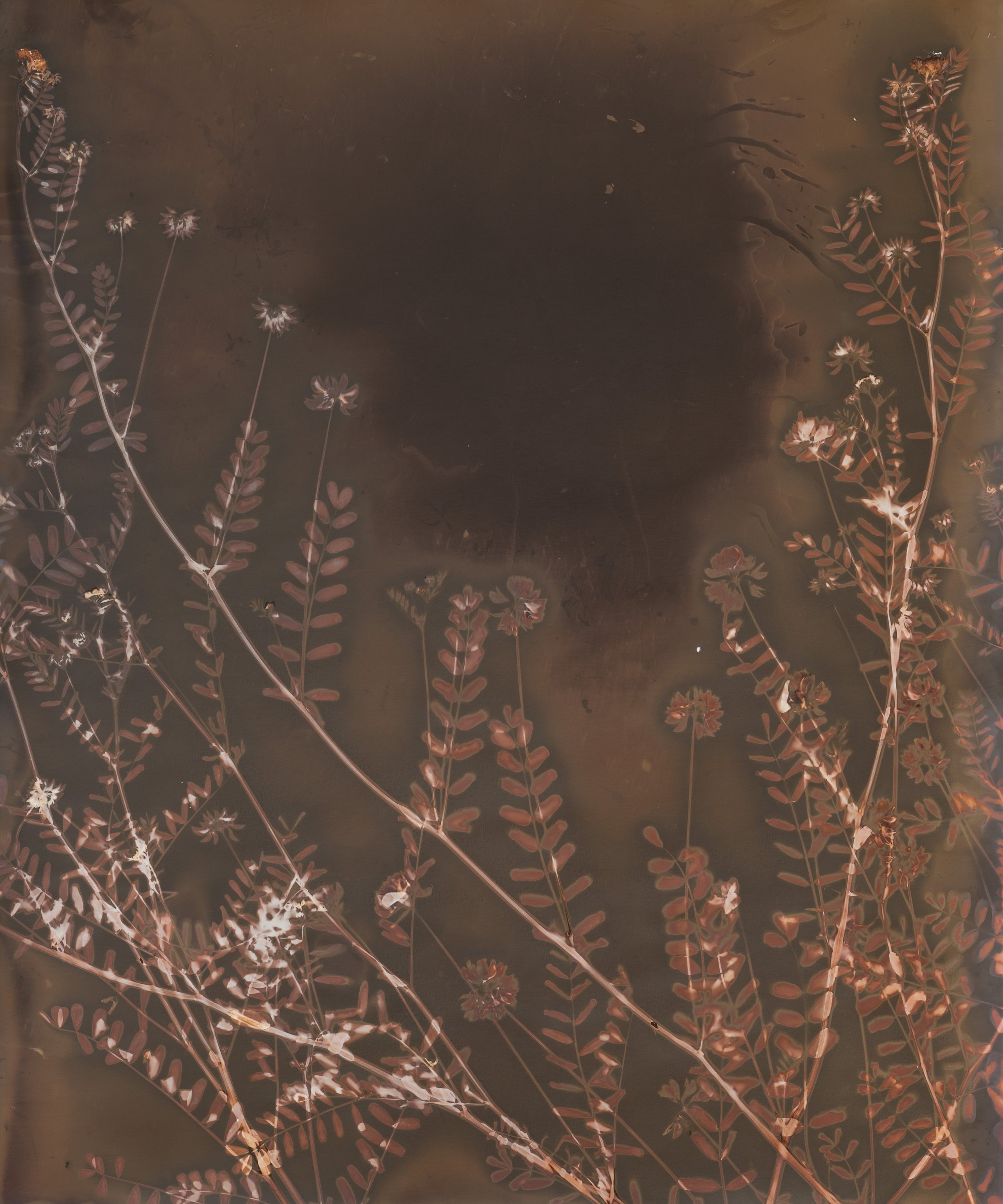
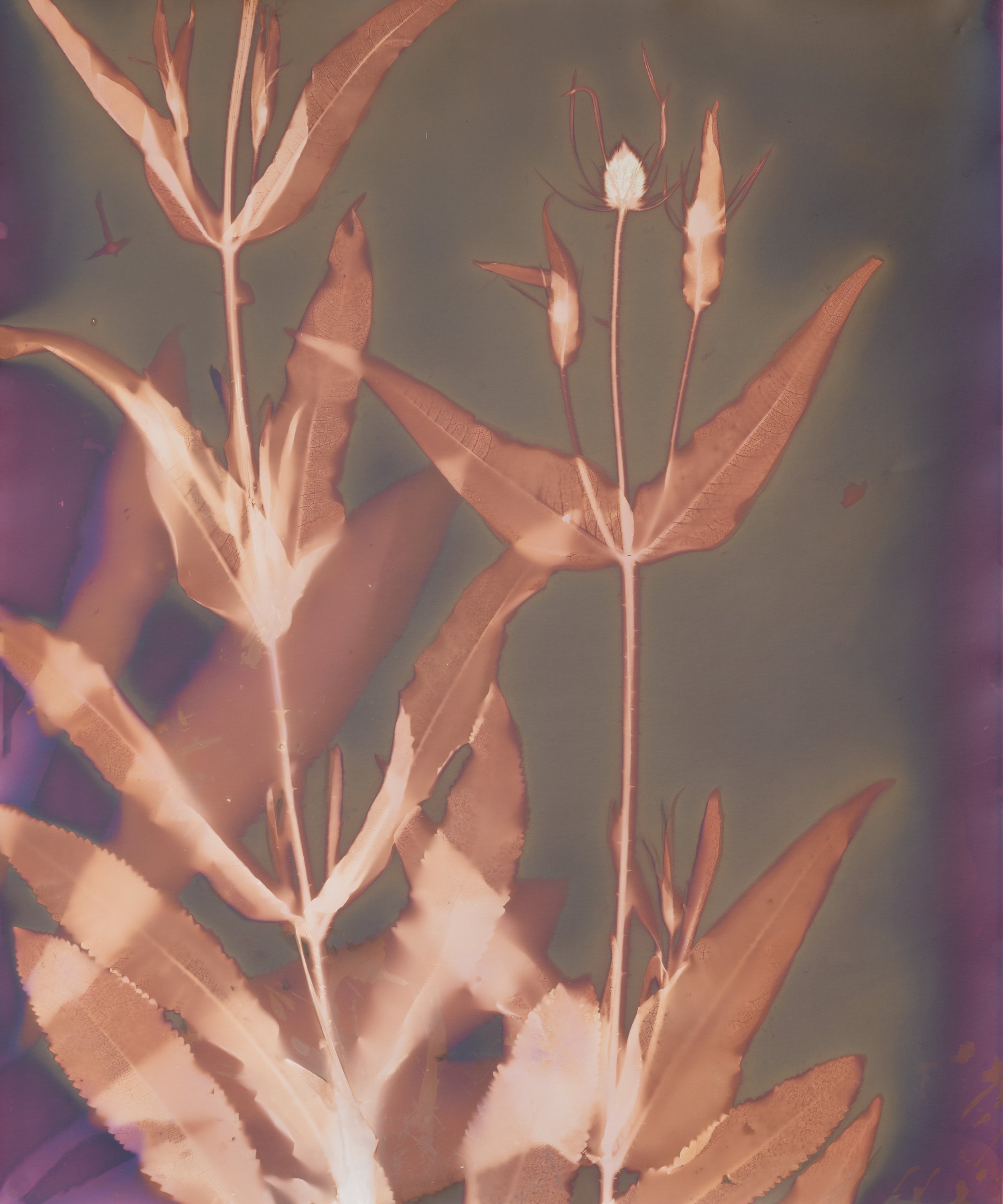
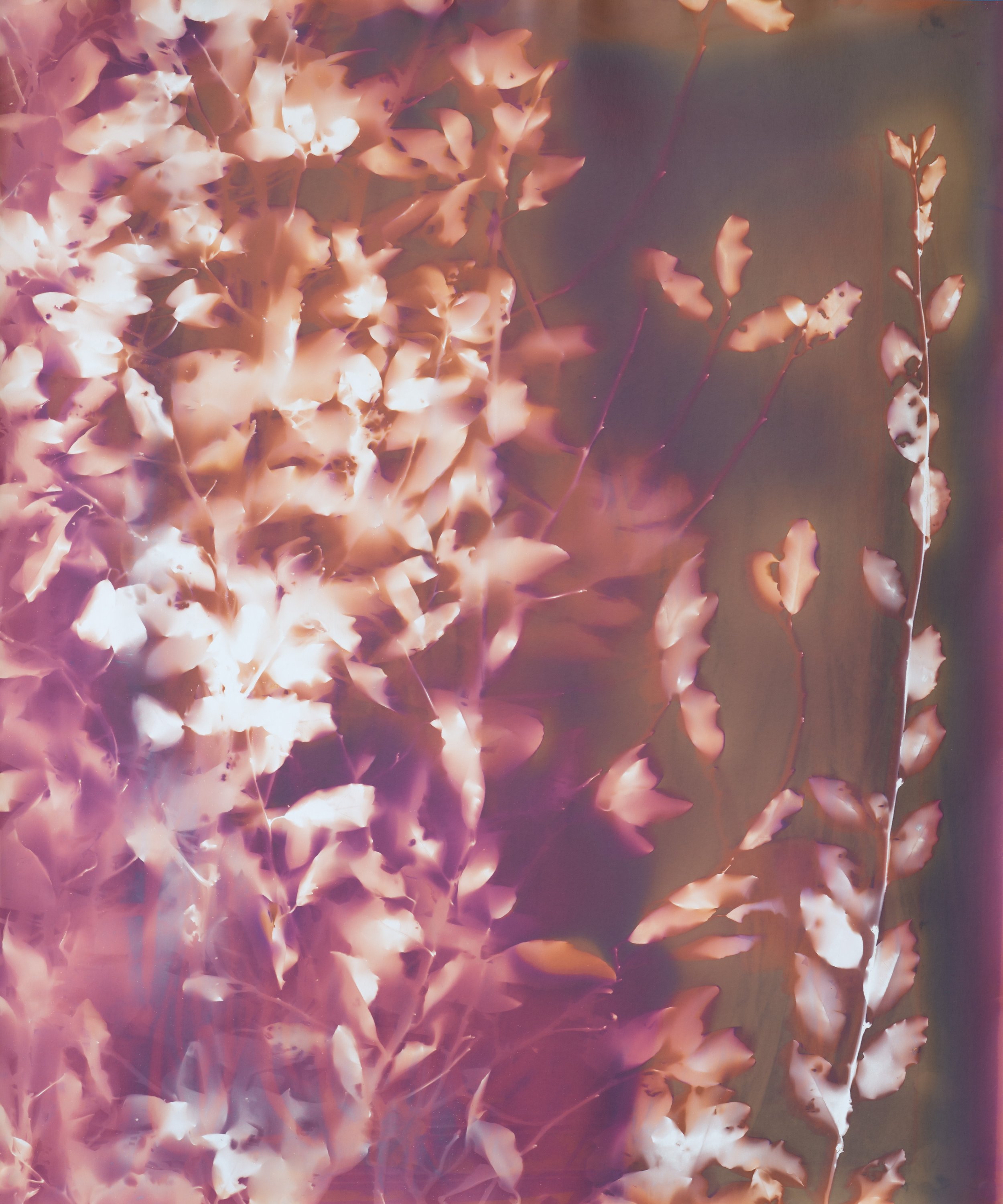
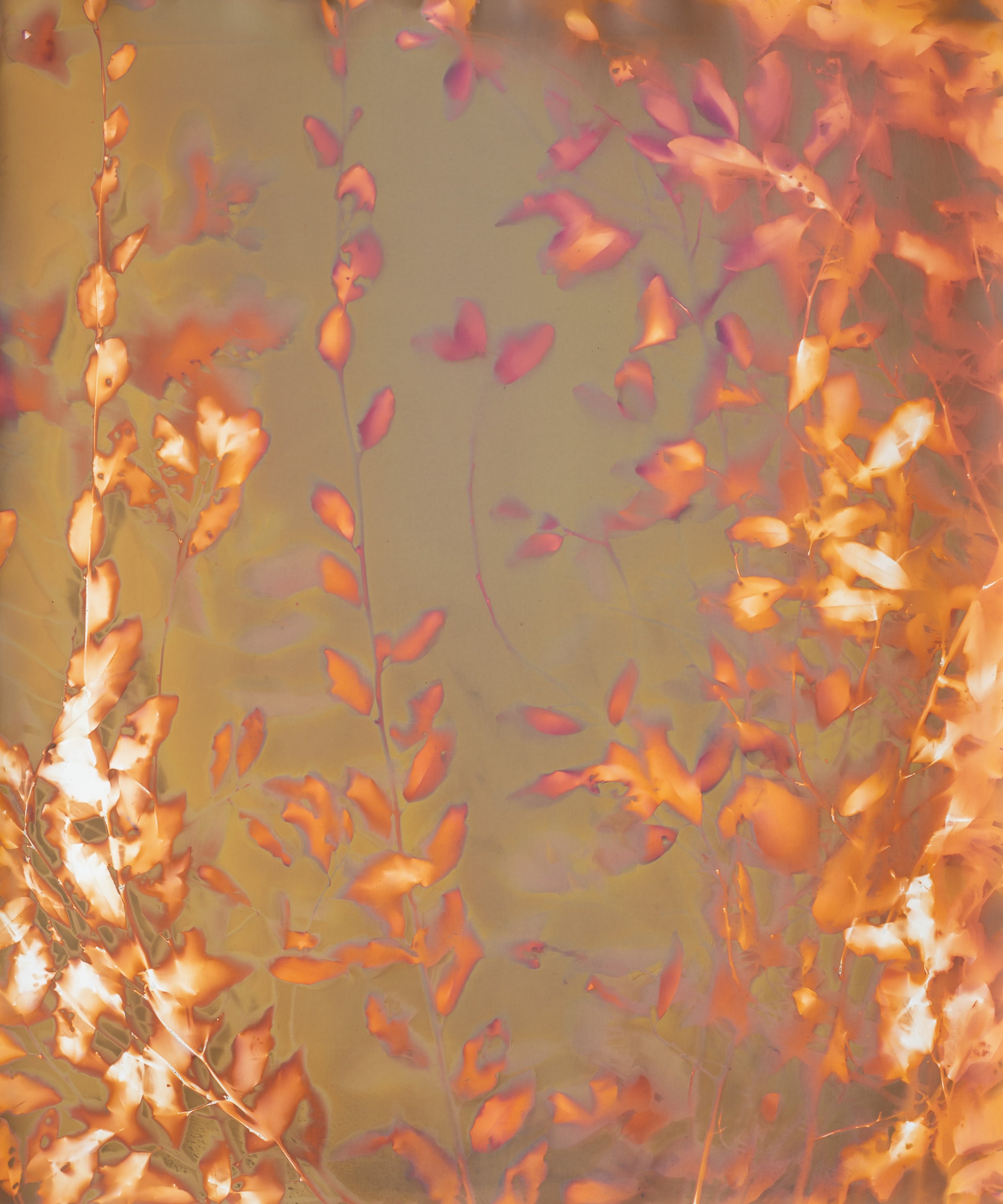
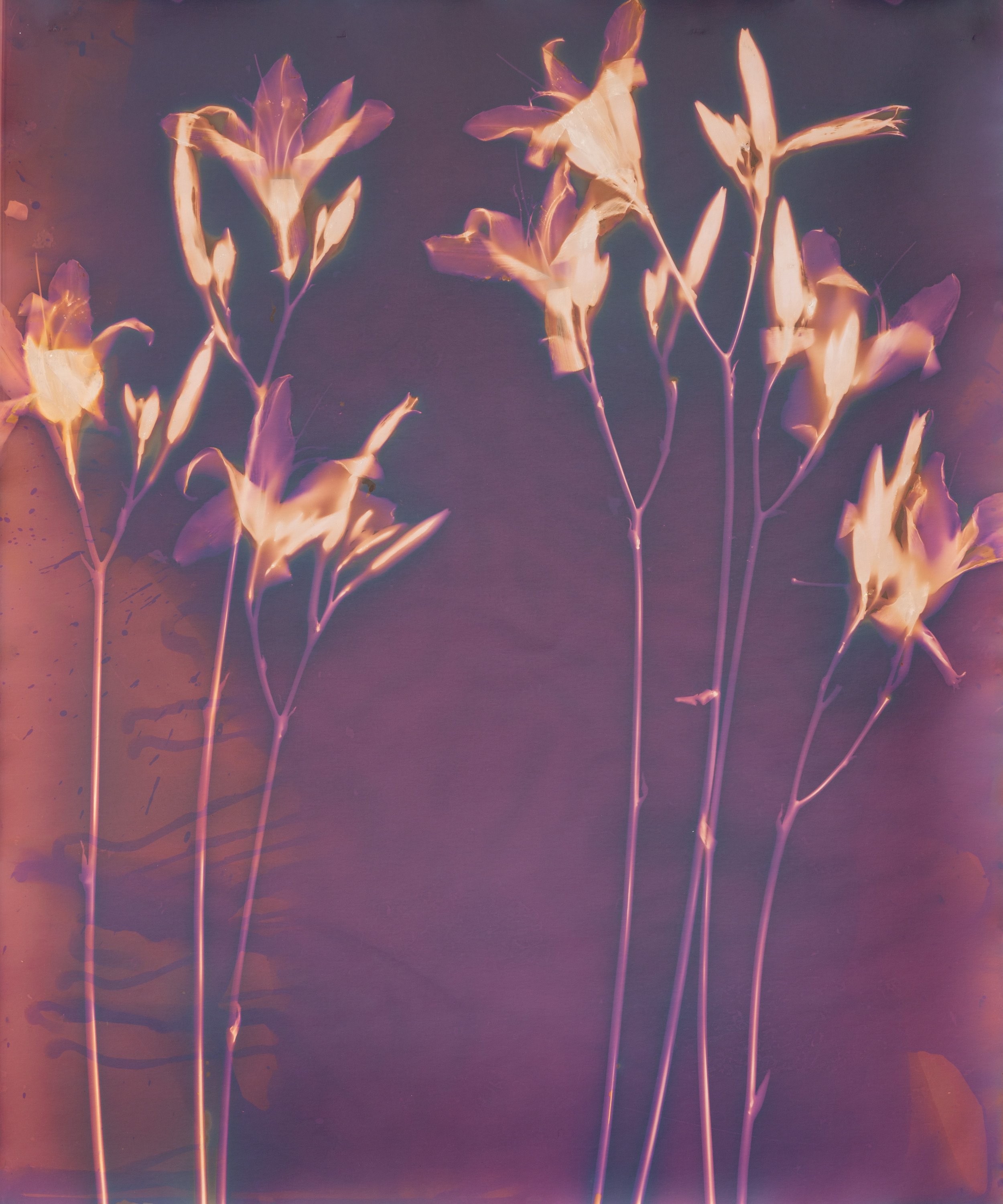
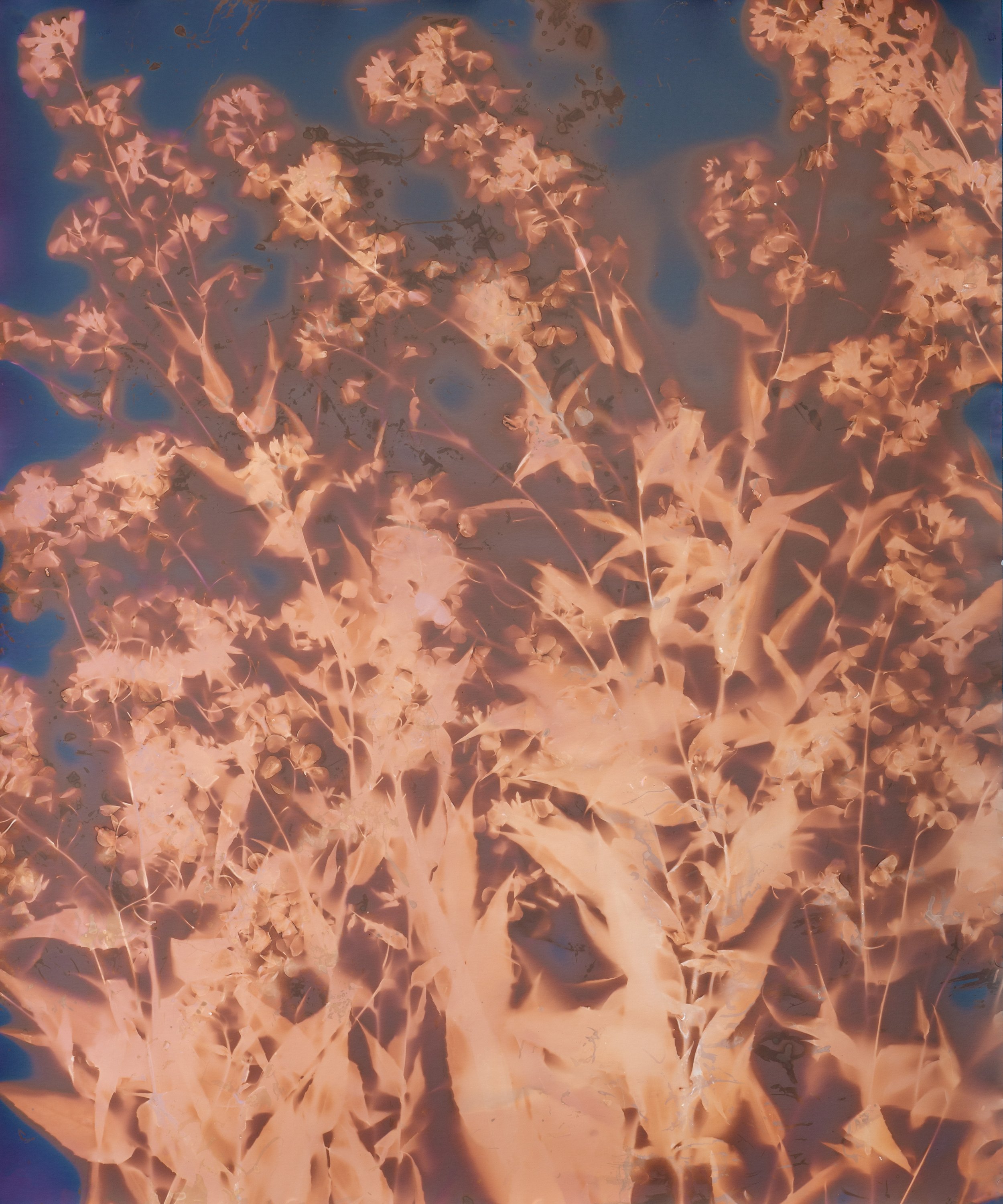
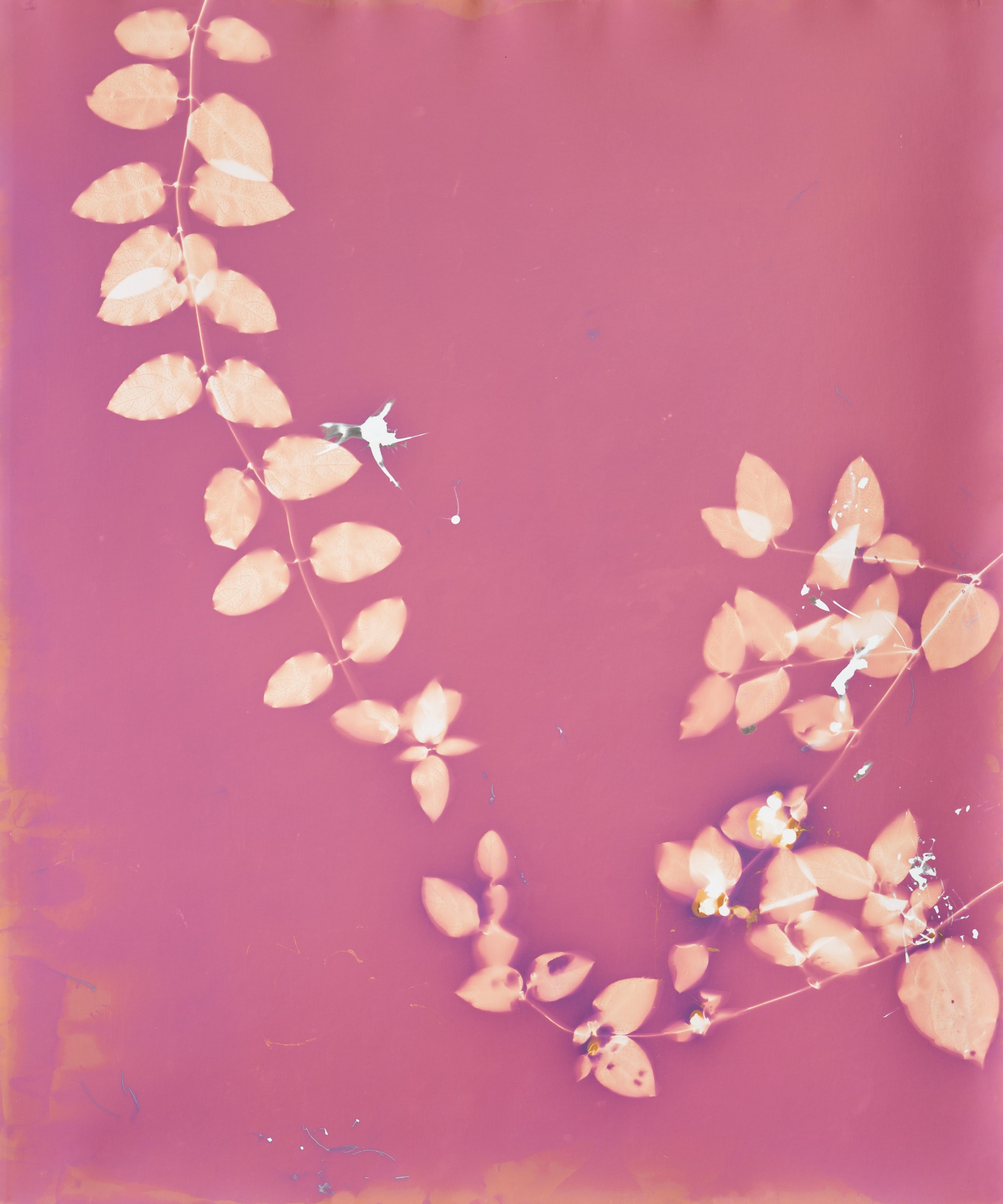
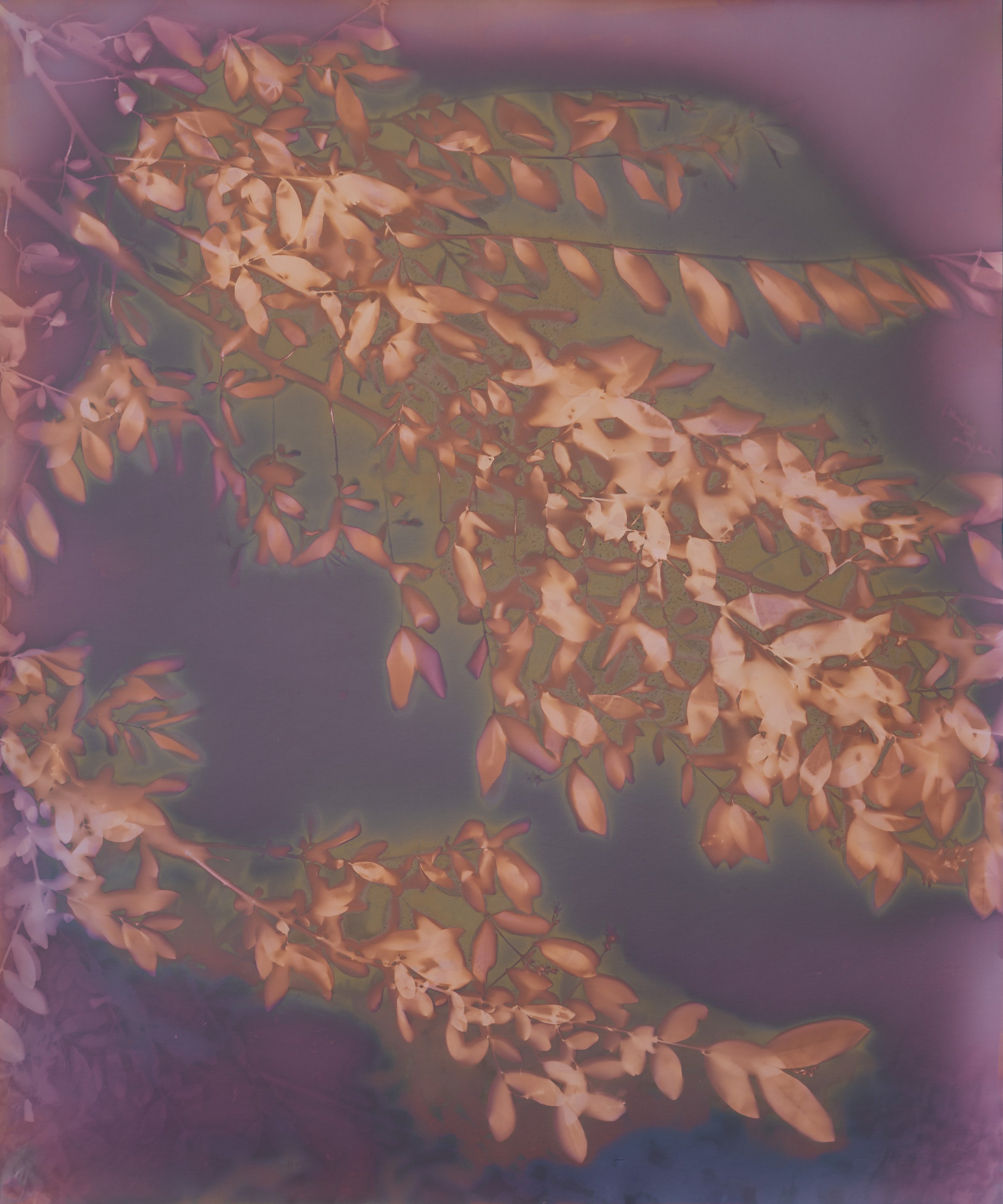
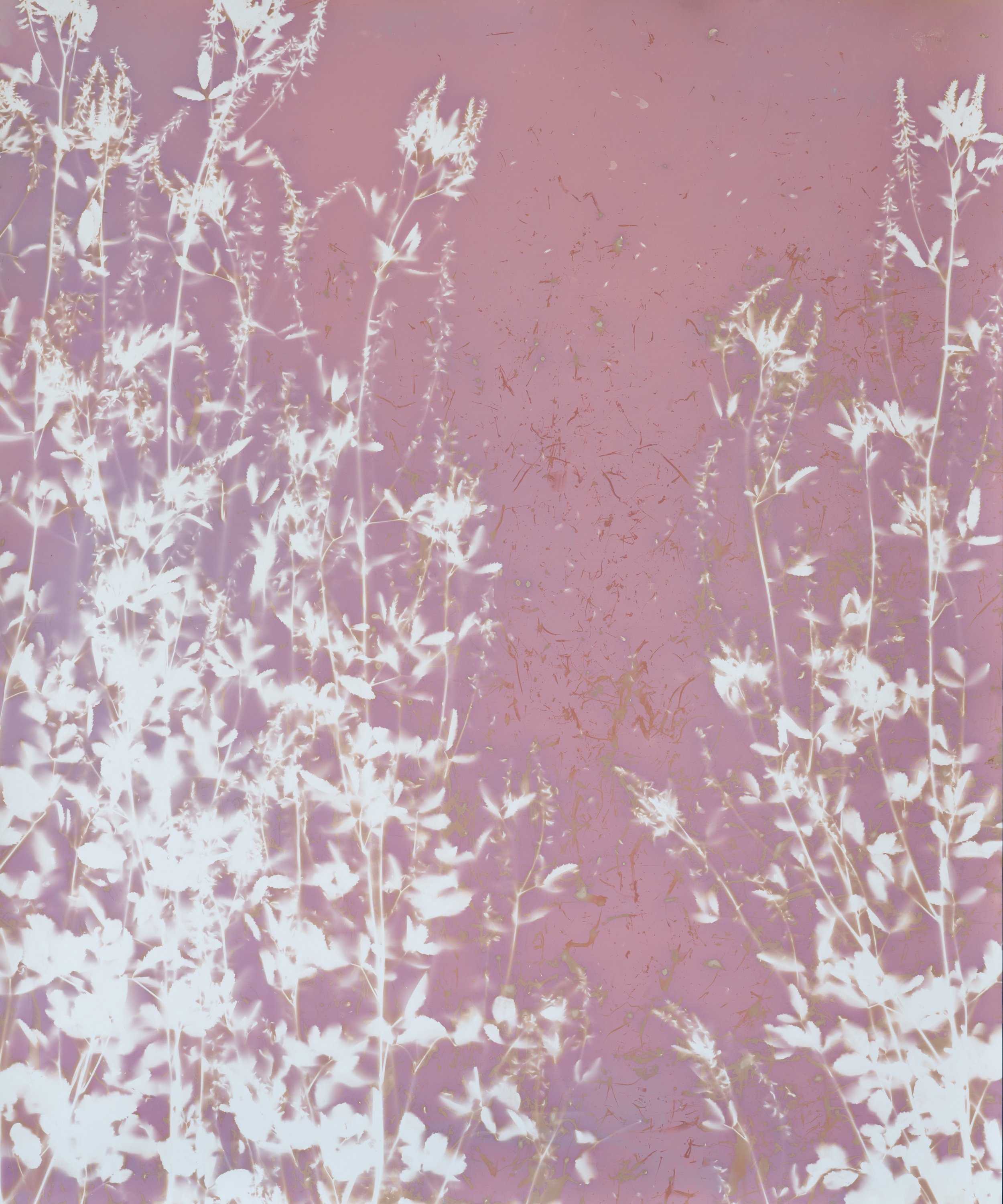
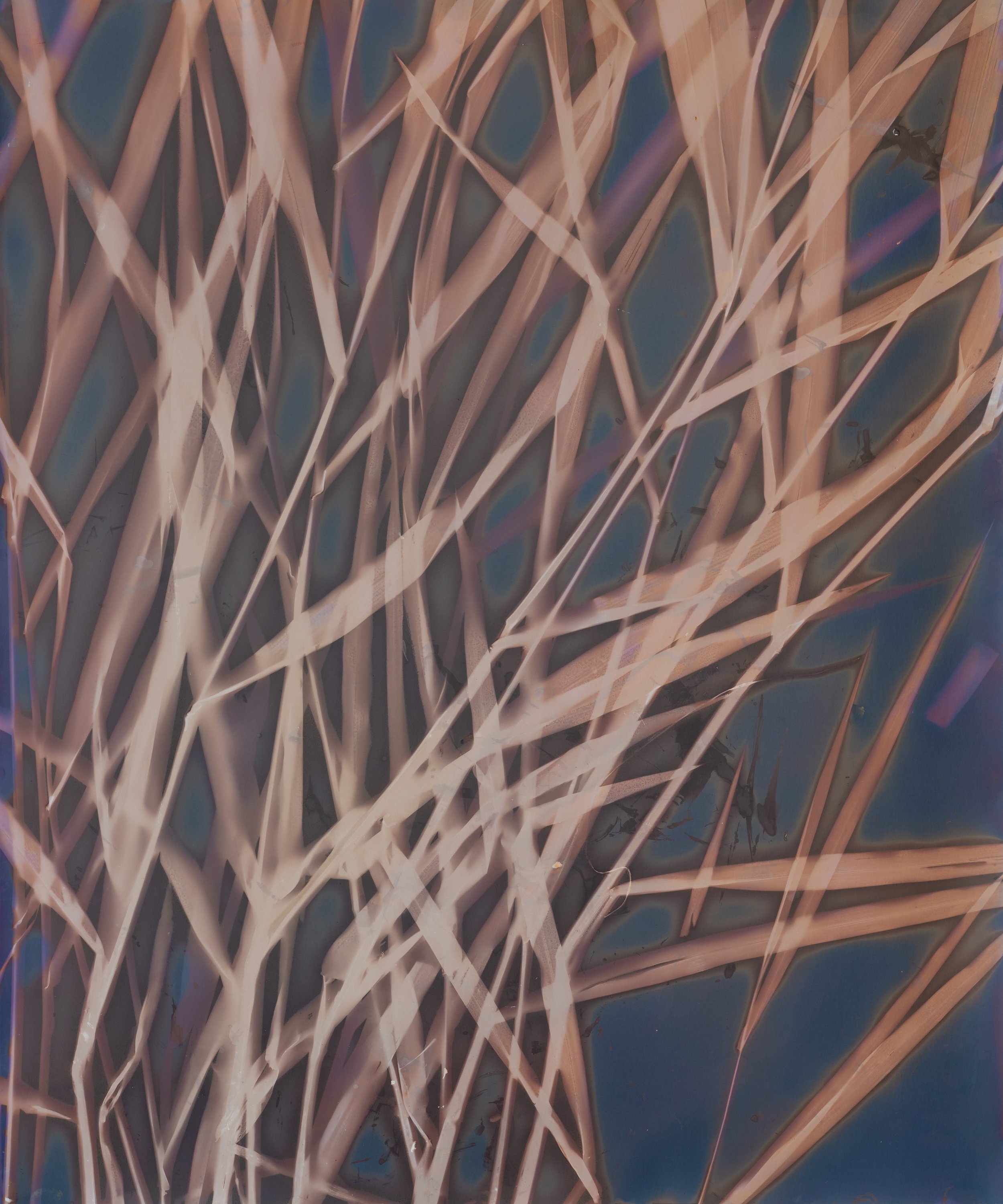

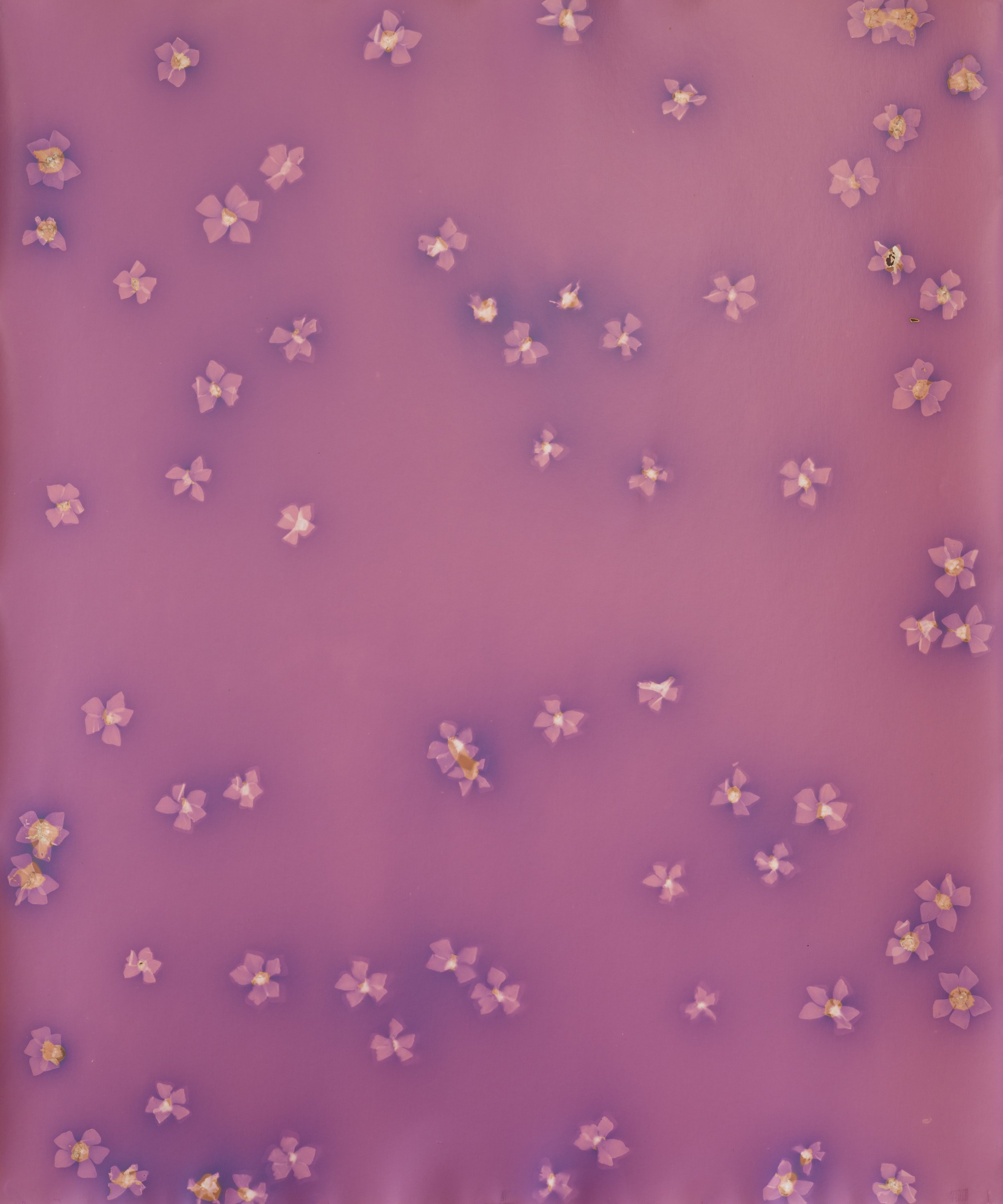


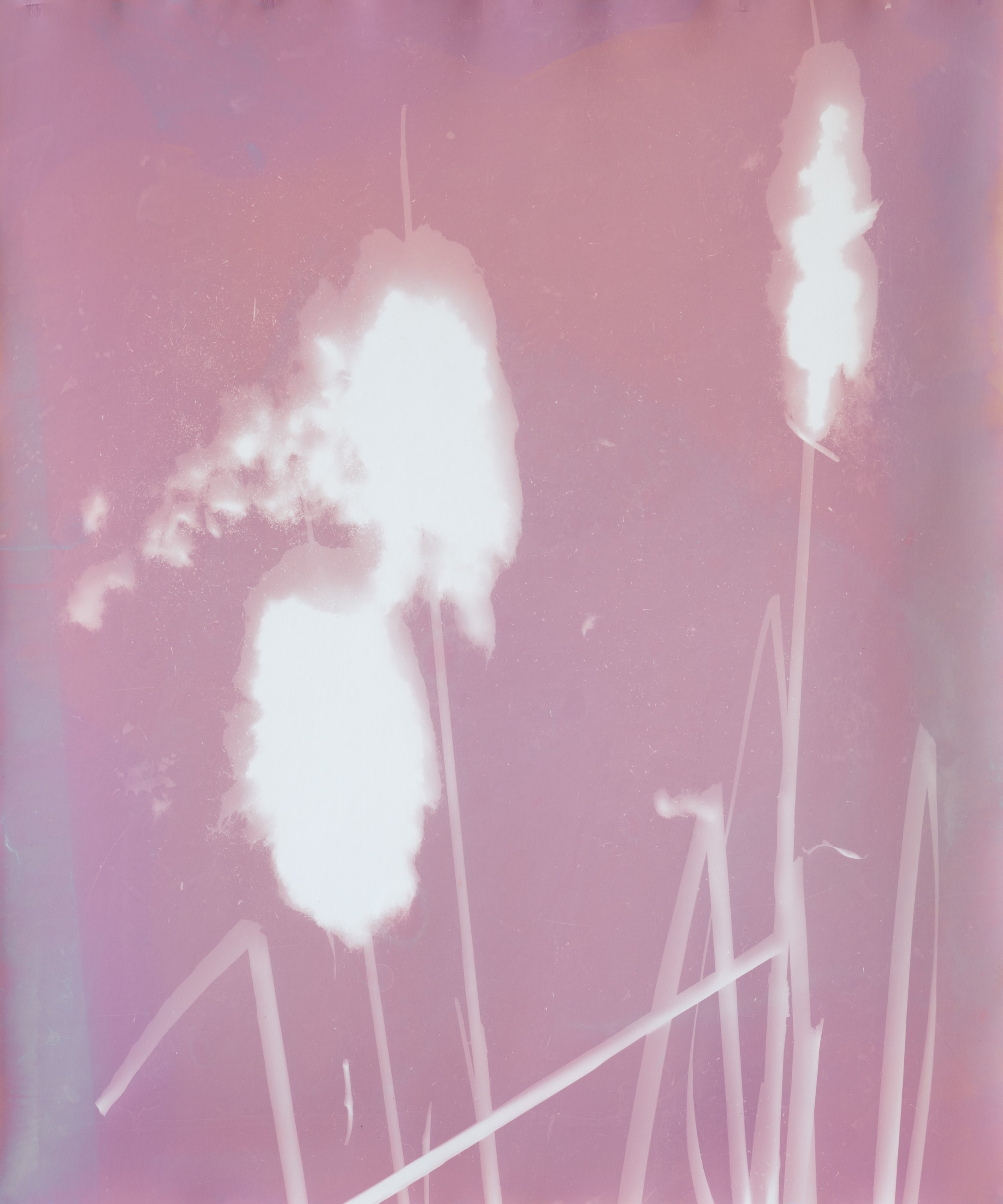
“Ghost Flowers" is a catalog of lumen prints which I made using specimens of non-native “invasive” plant species collected within a ¼ mile radius around my home.
In 2015, when my family and I moved to the woodsy “Wonder Hills” subdivision on the outskirts of Athens, Ohio, we loved feeling surrounded by Nature. However, I soon noticed something very unnatural: much of the lush greenery growing in our neighborhood was composed of plants from Eurasia and Japan. According to the Ohio DNR, about 1/4 of all plant species growing in Ohio are introduced from other parts of the world. Most of these 700+ non-native plants are benign. However, about 50 or so are classified as “invasive” by the National Invasive Species Council. These are plants that are “both non-native (or alien) to the ecosystem under consideration and whose introduction causes or is likely to cause economic or environmental harm, or harm to human health."
As I collected specimens of these invasives, I documented them using Lumen printing: a cameraless photographic technique in which objects (in this case plants) are pressed under glass on top of a sheet of light-sensitive silver-gelatin photo paper, then exposed to sunlight to create painterly, semi-abstract images that emphasize the physicality of the photograph.
My quasi-scientific approach is inspired by the catalogs of botanical photographs made by 19th century artist/naturalists like Anna Atkins. However Atkins’ cyanotype prints of seaweed reflect the 19th century view of Nature as well-ordered and rational. Her botanical specimens sit neatly and well-contained in the middle of the page. My weeds, on the other hand, spill out beyond the border of the paper, suggesting the chaos and unpredictability of 21st century ecology.
Despite their potential destructive power, I can’t help feeling some admiration for these hardy weeds. These humble plants are both beautiful and nearly impossible to eradicate. “Ghost Flowers” stands as a testament to the power of nature to defy human control.